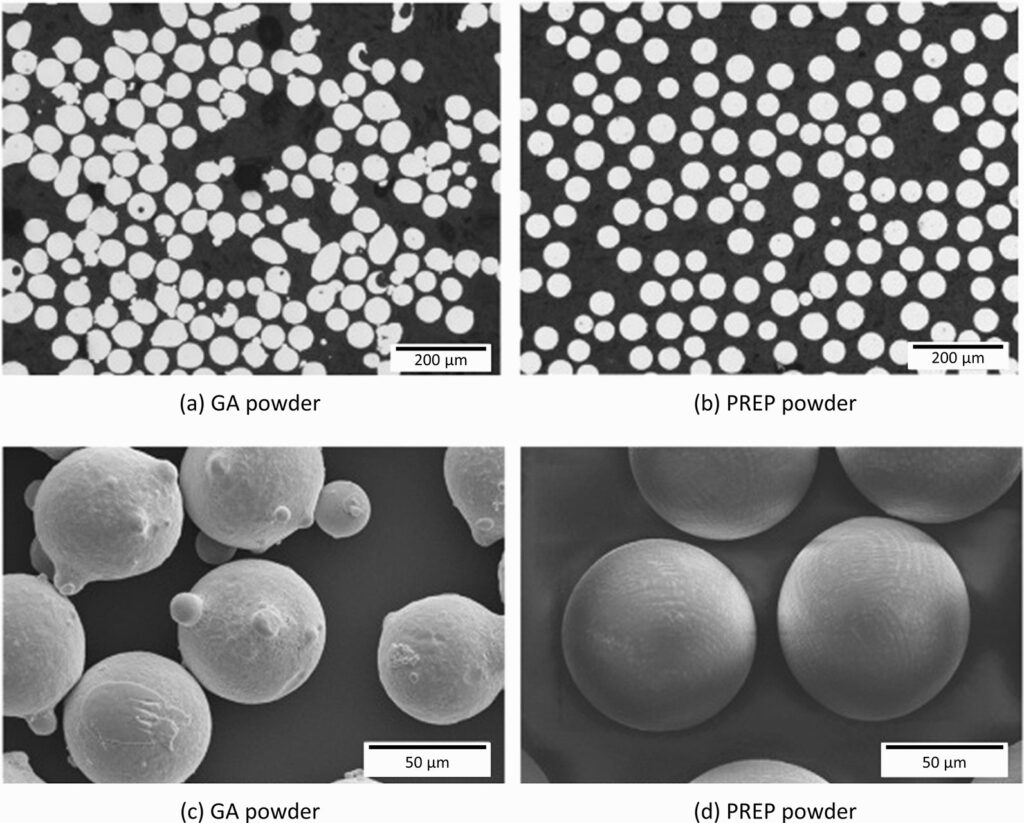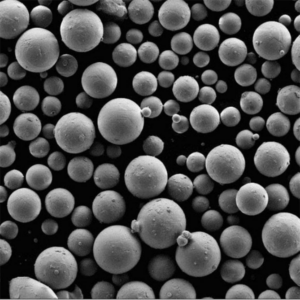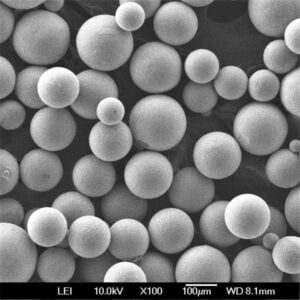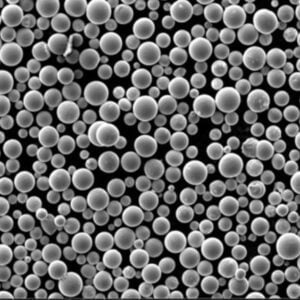
Haynes 230 Powder: Exceptional Strength and Reliability Explained
Low MOQ
Provide low minimum order quantity to meet different needs.
OEM & ODM
Provide customized products and design services to meet unique customer needs.
Adequate Stock
Ensure fast order processing and provide reliable and efficient service.
Customer Satisfaction
Provide high quality products with customer satisfaction at the core.
share this article
Table of Contents
When you’re dealing with high-temperature applications, where materials are pushed to their absolute limits, there’s one alloy that consistently stands out — Haynes 230 powder. Whether you’re working on gas turbines, combustion chambers, or even nuclear reactors, this superalloy is designed to handle the most extreme environments. But why is it so special? What makes it the go-to material for engineers and manufacturers in industries ranging from aerospace to power generation?
In this comprehensive guide, we’ll explore everything you need to know about Haynes 230 powder, from its composition and properties to its applications, specifications, and pricing. Whether you’re a seasoned engineer or someone new to high-performance materials, this article will give you a deep dive into what makes Haynes 230 powder one of the most sought-after alloys for high-temperature performance.
Overview of Haynes 230 Powder
Before we dive into the nitty-gritty details, let’s start with a quick overview. Haynes 230 powder is a nickel-chromium-tungsten alloy known for its outstanding high-temperature strength, oxidation resistance, and long-term thermal stability. It’s designed to withstand extreme temperatures while maintaining its strength and resisting oxidation and carburization — two common problems in high-heat environments.
Here are the key highlights of Haynes 230 powder:
- Exceptional high-temperature strength, making it ideal for applications like gas turbines and aerospace engines.
- Superior oxidation resistance up to 2100°F (1150°C), which means it won’t degrade when exposed to oxygen at elevated temperatures.
- Impressive thermal stability, ensuring the alloy retains its mechanical properties over long periods of time under stress.
- Good weldability, which allows for complex fabrications without compromising the integrity of the material.
Now, let’s break down these features in greater detail, starting with its composition and properties.
Composition and Properties of Haynes 230 Powder
The unique performance characteristics of Haynes 230 powder come from its carefully balanced chemical composition. Each element plays a vital role in making this alloy capable of handling extreme environments.
Chemical Composition of Haynes 230 Powder
| Element | Weight Percentage (%) | Purpose in the Alloy |
|---|---|---|
| Nickel (Ni) | 57.0 – 65.0 | The base element, providing high-temperature strength and corrosion resistance. |
| Chromium (Cr) | 20.0 – 24.0 | Enhances oxidation resistance, especially in high-temperature atmospheres. |
| Tungsten (W) | 13.0 – 15.0 | Improves the alloy’s creep strength and thermal stability at elevated temperatures. |
| Molybdenum (Mo) | 1.0 – 3.0 | Adds to the alloy’s creep resistance and reduces the risk of pitting corrosion. |
| Cobalt (Co) | 5.0 max | Contributes to oxidation resistance and enhances strength at high temperatures. |
| Iron (Fe) | 3.0 max | Adds toughness but is kept low to prevent compromising the alloy’s oxidation resistance. |
| Manganese (Mn) | 0.5 max | Improves workability and fabrication properties. |
| Silicon (Si) | 0.25 max | Enhances oxidation resistance. |
| Carbon (C) | 0.05 – 0.15 | Increases creep strength and hardness at elevated temperatures. |
| Boron (B) | 0.015 max | Improves grain boundary strength, particularly at high temperatures. |
Key Mechanical Properties of Haynes 230 Powder
The mechanical properties of Haynes 230 powder make it a top choice for applications where strength and resistance to deformation are critical, especially in high-temperature environments.
| Property | Value |
|---|---|
| Density | 8.98 g/cm³ |
| Melting Point | 1340°C – 1380°C (2444°F – 2516°F) |
| Ultimate Tensile Strength | 760 MPa (110 ksi) at room temperature |
| Yield Strength | 345 MPa (50 ksi) at room temperature |
| Elongation at Break | 43% at room temperature |
| Creep Resistance | Excellent, especially at temperatures above 800°C (1472°F) |
| Thermal Conductivity | 10.2 W/m·K at 20°C (68°F) |
| Oxidation Resistance | Reliable up to 1150°C (2100°F) |
| Hardness | 85 HRB (Rockwell B) |
These properties make Haynes 230 powder a go-to material for high-stress, high-temperature applications, where maintaining mechanical integrity is crucial for long-term performance.
Applications of Haynes 230 Powder
Where can you find Haynes 230 powder in action? It’s used in a variety of industries where heat, oxidation, and stress resistance are paramount. From gas turbines to chemical processing plants, this alloy is a workhorse for the most demanding environments.
Common Applications of Haynes 230 Powder by Industry
| Industry | Application |
|---|---|
| Aerospace | Used in combustion chambers, exhaust systems, and gas turbine blades due to its high-temperature strength. |
| Power Generation | Employed in industrial gas turbines, boilers, and heat exchangers where oxidation resistance is crucial. |
| Chemical Processing | Ideal for furnaces, reactors, and heat shields exposed to corrosive chemicals at elevated temperatures. |
| Nuclear Industry | Used in nuclear reactors and fuel element cladding due to its thermal stability and radiation resistance. |
| Furnace Equipment | Applied in industrial furnaces, burners, and retorts that operate at high temperatures. |
| Automotive | Utilized in turbochargers and exhaust systems for engines that require heat resistance and mechanical strength. |
Why Haynes 230 Powder is Ideal for These Applications
The reason Haynes 230 powder is so widely used across these industries is that it offers a balance of strength and resistance to oxidation at high temperatures. In the aerospace industry, for example, the material can withstand the extreme environments inside gas turbine engines, where both heat and oxidation are significant concerns. Similarly, in chemical processing, Haynes 230 can endure prolonged exposure to corrosive chemicals while maintaining its mechanical properties, which is crucial for preventing equipment failure and downtime.
Specifications, Sizes, and Standards for Haynes 230 Powder
When selecting Haynes 230 powder for your application, ensuring that it meets the necessary industry standards and fits the specific sizes and forms required is crucial. Below, we outline the most common specifications and available sizes for this versatile alloy.
Specifications and Standards for Haynes 230 Powder
| Specification/Standard | Details |
|---|---|
| UNS Number | N06230 |
| AMS Standards | AMS 5878, covering sheet, strip, and plate for high-temperature applications. |
| ASTM Standards | ASTM B435 (sheet and plate), ASTM B564 (forged fittings), ASTM B619 (welded pipe). |
| ISO Standards | ISO 15156, for materials used in sour gas environments. |
| Powder Particle Size | 15 to 45 microns, ideal for additive manufacturing and thermal spray coatings. |
| Density | 8.98 g/cm³ |
| Melting Range | 1340°C – 1380°C (2444°F – 2516°F) |
| Corrosion Resistance | Excellent in both oxidizing and carburizing environments. |
Available Sizes and Forms of Haynes 230 Powder
Haynes 230 powder can be purchased in various sizes and forms depending on the application and manufacturing process. Below are the most commonly available options:
| Form | Available Sizes |
|---|---|
| Powder | Particle sizes typically range from 15 to 45 microns, used for additive manufacturing and metal injection molding. |
| Rod/Bar | Available in diameters ranging from 0.5 to 6 inches, used for valves, piping, and large components. |
| Sheets and Plates | Available in thicknesses ranging from 1 mm to 50 mm, used for furnace components, heat exchangers, and more. |
Suppliers and Pricing of Haynes 230 Powder
Finding reliable suppliers for Haynes 230 powder is essential to ensure you get high-quality material that meets all industry standards. Below is a list of some trusted suppliers and the estimated pricing for Haynes 230 powder.
Suppliers and Pricing for Haynes 230 Powder
| Supplier | Price Range (per kg) | Notes |
|---|---|---|
| Höganäs AB | $950 – $1100 | Specializes in high-performance metal powders for additive manufacturing and thermal spray. |
| Carpenter Technology | $1000 – $1150 | Offers custom formulations for high-temperature applications. |
| Oerlikon Metco | $980 – $1150 | Supplies Haynes 230 powder for thermal spray coatings and laser cladding. |
| Sandvik | $950 – $1100 | Focuses on advanced materials for corrosive environments and high-temperature conditions. |
Prices generally range from $950 to $1150 per kilogram, depending on the supplier, particle size, and order volume. Pricing may also fluctuate based on market demand and material availability.
Comparing the Pros and Cons of Haynes 230 Powder
Like any material, Haynes 230 powder comes with both advantages and limitations. Understanding these can help you make an informed decision about whether this alloy is right for your specific application.
Advantages
| Advantage | Description |
|---|---|
| High-Temperature Stability: Maintains strength and structural integrity at temperatures up to 1150°C. | Perfect for use in gas turbines, heat exchangers, and industrial furnaces. |
| Oxidation Resistance: Resists oxidation in high-temperature environments. | Provides long-lasting protection in combustion chambers, exhaust systems, and chemical reactors. |
| Good Weldability: Can be easily welded without compromising mechanical properties. | Suitable for complex fabrication and repair work in demanding environments. |
| Corrosion Resistance: Performs well in environments containing oxidizing atmospheres and carburizing conditions. | Ideal for chemical processing and power generation applications. |
Limitations
| Limitation | Description |
|---|---|
| Cost: More expensive than standard stainless steels or other high-temperature alloys. | May not be suitable for budget-sensitive projects. |
| Limited Availability: Some specialized forms or particle sizes may require custom orders. | Can lead to longer lead times and higher costs for specific applications. |
| Oxidizing Environments: While resistant to oxidation, Haynes 230 may not perform as well in severely oxidizing atmospheres. | Consider other nickel-based alloys for extreme oxidation resistance. |
| Work Hardening: Can harden during processing, which may affect machinability. | Requires special care during machining and forming operations. |
FAQs
To further clarify some of the most common questions about Haynes 230 powder, we’ve compiled a list of frequently asked questions. Whether you’re considering this alloy for your next project or just want to learn more, these answers should help.
| Question | Answer |
|---|---|
| What is Haynes 230 powder used for? | It’s widely used in industries such as aerospace, power generation, and chemical processing for high-temperature, high-stress applications. |
| How much does Haynes 230 powder cost? | Prices typically range from $950 to $1150 per kilogram, depending on the supplier and specifications. |
| Can Haynes 230 powder be used in 3D printing? | Yes, Haynes 230 powder is commonly used in additive manufacturing for creating parts that require heat resistance and oxidation resistance. |
| What industries use Haynes 230 powder? | Industries such as aerospace, chemical processing, power generation, and automotive utilize this alloy for its high-temperature performance. |
| Is Haynes 230 powder weldable? | Yes, Haynes 230 powder has good weldability, making it suitable for fabrication and repair applications. |
| How does Haynes 230 compare to Haynes 188? | While Haynes 230 is ideal for high-temperature oxidation resistance, Haynes 188 offers better thermal fatigue resistance in cyclic environments. |
| Can Haynes 230 powder handle high temperatures? | Absolutely, Haynes 230 offers excellent mechanical strength and oxidation resistance at temperatures up to 1150°C (2100°F). |
| What are the main advantages of Haynes 230 powder? | Its key advantages include high-temperature stability, oxidation resistance, and good mechanical properties in harsh environments. |
| What are the limitations of Haynes 230 powder? | The main limitations include its higher cost and limited availability in certain sizes or forms. |
Conclusion: Why Haynes 230 Powder is the Ideal Choice for High-Temperature Applications
In industries where high-temperature strength and oxidation resistance are critical, Haynes 230 powder offers an exceptional balance of performance and durability. Its unique combination of mechanical properties and resistance to harsh environments makes it a top choice for applications like gas turbines, industrial furnaces, and chemical reactors.
While Haynes 230 powder may come at a higher cost compared to other alloys, its long-term benefits—including reduced maintenance, longer service life, and improved performance—make it a smart investment for industries that demand high-performance materials.
So, if you’re looking for a material that can withstand extreme heat, resist oxidation, and maintain its mechanical integrity in some of the harshest environments, Haynes 230 powder is definitely worth considering. Whether you’re in aerospace, power generation, or chemical processing, this alloy has the potential to significantly enhance the longevity and efficiency of your equipment.
Get Latest Price
About Met3DP
Product Category
HOT SALE
CONTACT US
Any questions? Send us message now! We’ll serve your request with a whole team after receiving your message.

Metal Powders for 3D Printing and Additive Manufacturing
COMPANY
PRODUCT
cONTACT INFO
- Qingdao City, Shandong, China
- [email protected]
- [email protected]
- +86 19116340731








